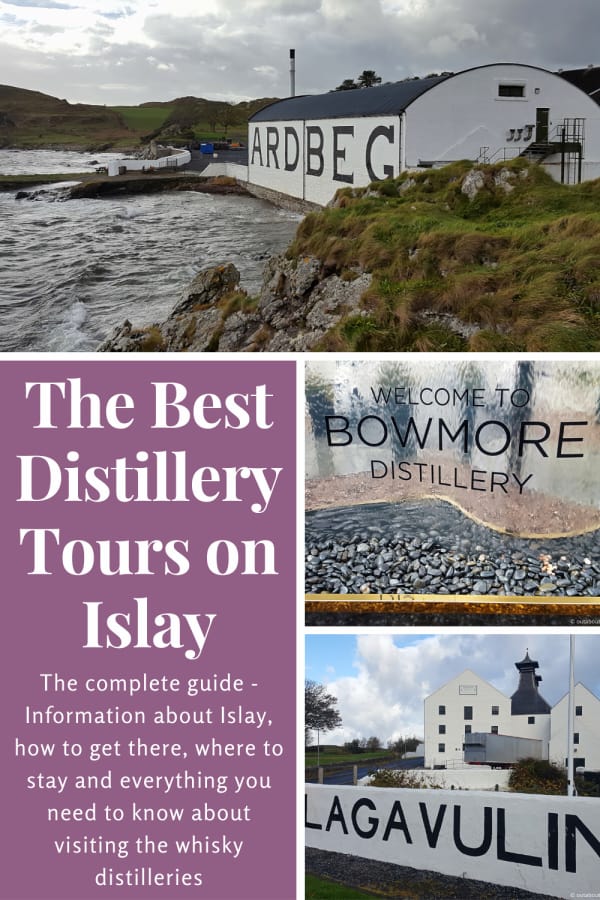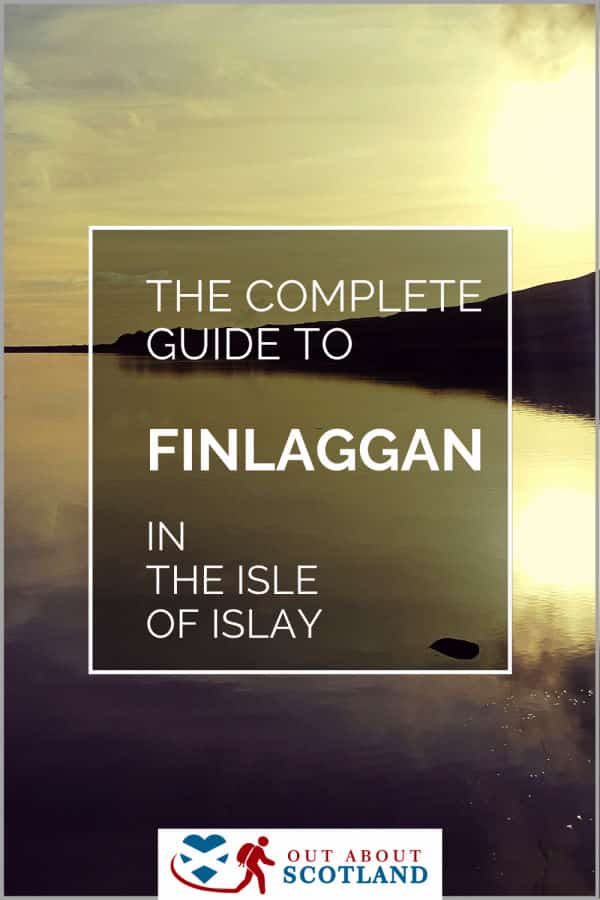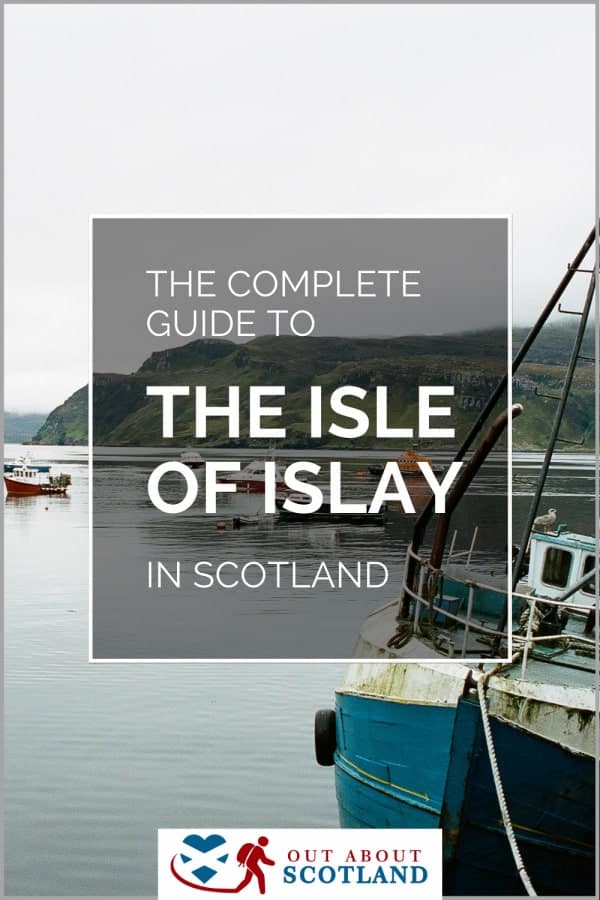The Isle of Islay, known as ‘The Queen of the Hebrides’ is the southernmost island of the Inner Hebrides and the fifth-largest Scottish island. With an area of 240 square miles (620 square kilometres), Islay is 25 miles (40 kilometres) long from north to south and 15 miles (24 kilometres) broad.
The island’s capital and largest settlement is Bowmore where the local council is based. Islay is famous for its malt whiskies and is home to nine working distilleries including Ardbeg, Lagavulin, and Laphroaig on the south of the island; Bowmore, Bruichladdich, and Caol Ila to the north; Bunnahabhain and Ardnahoe to the northeast and Kilchoman to the northwest.
Apart from whisky, Islay is also known for its wildlife with over 250 species of birds being recorded on the island. Birdwatchers go there to see golden and sea eagles, and it’s a popular destination for walkers who enjoy roaming across miles of beautiful sandy beaches, rugged cliffs, and sweeping plains of moorland.
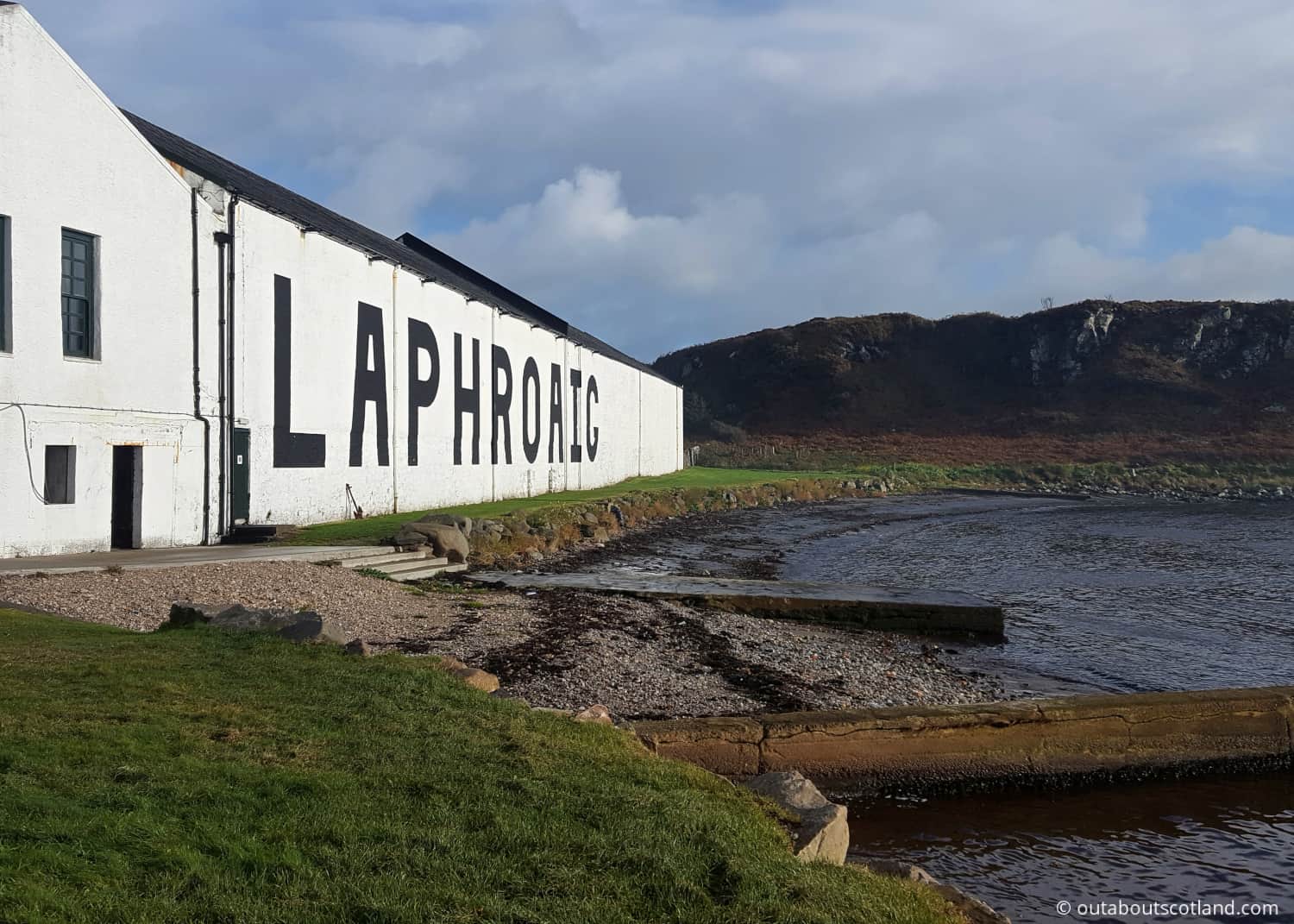
Overview

The Isle of Islay, located off Scotland’s west coast, is renowned for its picturesque landscapes, abundant wildlife, and cultural heritage. It holds particular acclaim as the ‘Queen of the Hebrides’ and is the country’s unofficial whisky capital, housing nine active distilleries that produce world-class peat-infused single malt scotch.
The Isle of Islay is one of the largest west-coast Scottish islands and has the nickname ‘The Queen of the Hebrides’ – a title that perfectly sums up the place.
Islay is the southernmost island in the Southern Hebrides and is home to over 3,000 people, with much of the workforce occupied in the fishing, agriculture, tourism and whisky-distilling industries. The latter is easily the biggest employer and for such a small island it’s amazing to think that nine working distilleries operate daily, churning out high-quality whisky for consumption around the world.
Unlike other wind-battered islands like Tiree, you’ll find that Islay has lots of woodland in addition to beautiful beaches and quaint villages, and there’s a surprising amount of wildlife to see if you explore the rugged coastline that surrounds it.
This mixture of natural beauty and world-class whisky draws tens of thousands of holiday-makers annually, though this number pales in comparison to the crowds that flock to Skye and Mull. Even so, Islay has superb tourist facilities and visitors will be able to enjoy browsing craft shops in quaint villages, touring around the coastline on boat cruises, and cycling for miles across virtually traffic-free roads.
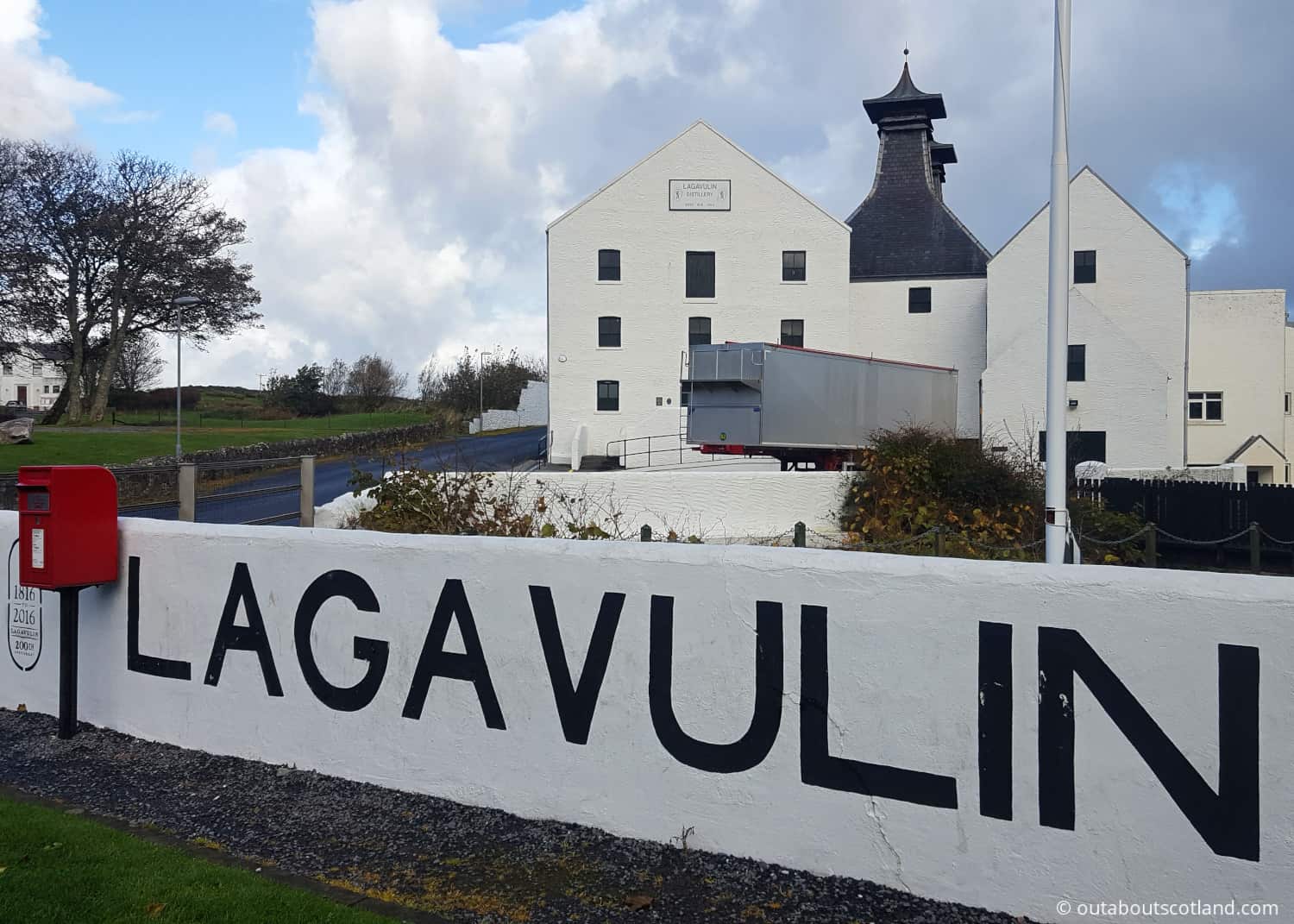
Book Tours in Scotland
The Highlights
1: Islay is a stunning island which features scenic views that rival any other Scottish island. There’s so much more to Islay than whisky distilleries and places like Claggain Bay and The Oa are worth the ferry costs alone.
2: The Isle of Islay is blessed with a rich variety of wildlife, making it a paradise for nature lovers. The island is also a haven for bird watchers, with a large population of birds including choughs, golden eagles, and many species of seabirds.
3: Islay has a deep history and cultural heritage that dates back thousands of years. The island is dotted with historical sites, including ancient Celtic crosses, and medieval castles such as the ruins of Dunyvaig and Finlaggan, the ancient seat of the Lords of the Isles.
Visiting Tips
1: If you’re after a good deal on Islay whisky be sure to check out the wee independent shops in the villages as you’ll often find a bargain hidden away on the shelves.
2: The Loch Gruinart RSPB reserve is a fantastic place for bird watchers. Take your binoculars (recommended optics from Amazon) and a camera with a good zoom lens. There are bird hides on the reserve that offer fantastic views of huge flocks of barnacle geese as well as waders and the elusive corncrake.
3: There are plenty of places to get a meal on Islay but my favourite is the Old Kiln Café at the Ardbeg distillery. The prices are reasonable, the servings are enormous, and the food is delicious.
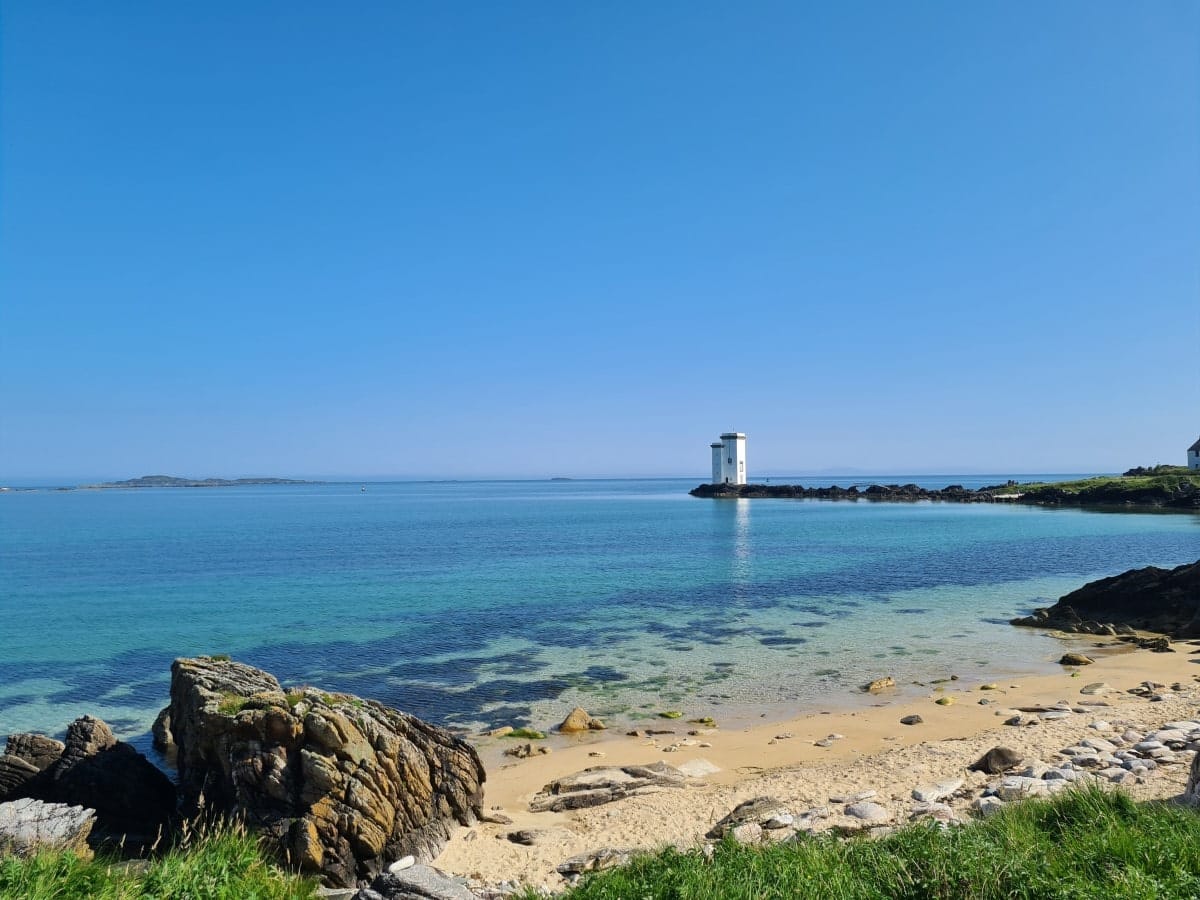
Protect Your Family From Scotland's Biting Midges
- Powerful, reliable protection for up to 8 hours
- Water- and sweat resistant
- Repels midges, mosquitoes, horse flies, sand flies, fleas and ticks
- Safe for use on adults, children over 30 months and pregnant women
- Non-sticky, moisturising with a pleasant fragrance
- Packaging may vary
Tourist Information
Whisky isn’t the only reason to visit Islay. There are some beautiful beaches on the island and you’ll frequently find wide-open expanses of golden sand that are empty, even on the sunniest days
The rugged southeast coast is especially interesting thanks to its dramatic coastline that rises steeply from the Sound of Islay up to the 1,610-foot (491-metre) peaks of Beinn Bheigier, while the southwest coast is heavily wooded and features the stunning Oa peninsula which is (in my opinion) the best place on the island for walking.
The Islanders generally live in the villages from which most of the distilleries take their name, so if you’re a fan of Bowmore, Port Charlotte, Port Askaig and Port Ellen, you’d be well advised to take a walk around their namesake settlements.
Pretty much all of the villages on Islay are a step back in time with quaint high streets, but the highlight has to be Bowmore which is one of the largest settlements and is home to the famous Bowmore Distillery and its tasting room that overlooks Loch Indaal.
One thing I recommend you do before setting off to explore Islay is to purchase an Ordnance Survey map so you can find the best walking routes. OS maps are invaluable for this and I find them a hundred times easier to use than Google Maps, mainly because phone signals are very weak on most of the Hebridean islands.
Buy OS Explorer Maps directly from Ordnance Survey.
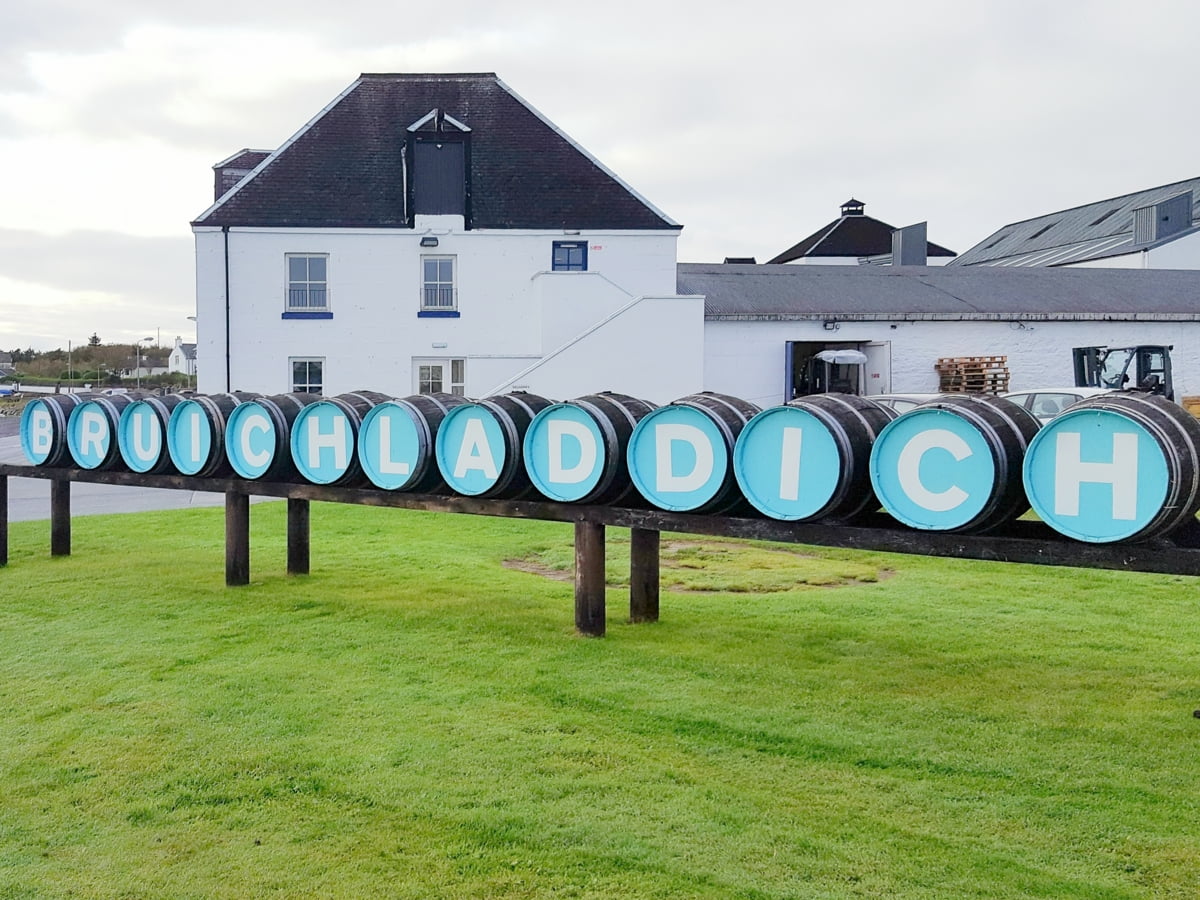
Whisky
Islay is one of the five whisky-distilling regions in Scotland that has its identity protected by law. Even the word ‘whisky’ is protected, with all other distilleries in the world having to use a different spelling – which is why you’ll always find American and Irish spirits labelled as whiskey (note the letter e).
Due to the use of Islay peat in the distilling process, the single malts produced on Islay have a very distinctive smoky flavour which is world-renowned for being the most intense of all Scotch whisky-producing regions.
The oldest distillery on the island can be found in the village of Bowmore which was founded back in 1779, a time when Islay’s whisky was so popular there were 23 distilleries in operation – but most of these have now sadly closed their doors.
If you want to learn more, most of the remaining distilleries have guided tours where for a small fee you’ll be shown the entire distilling process before being given a sample or two. There are also excellent cafés and souvenir shops at most distilleries so there’s no reason not to visit at least one of them during your trip.
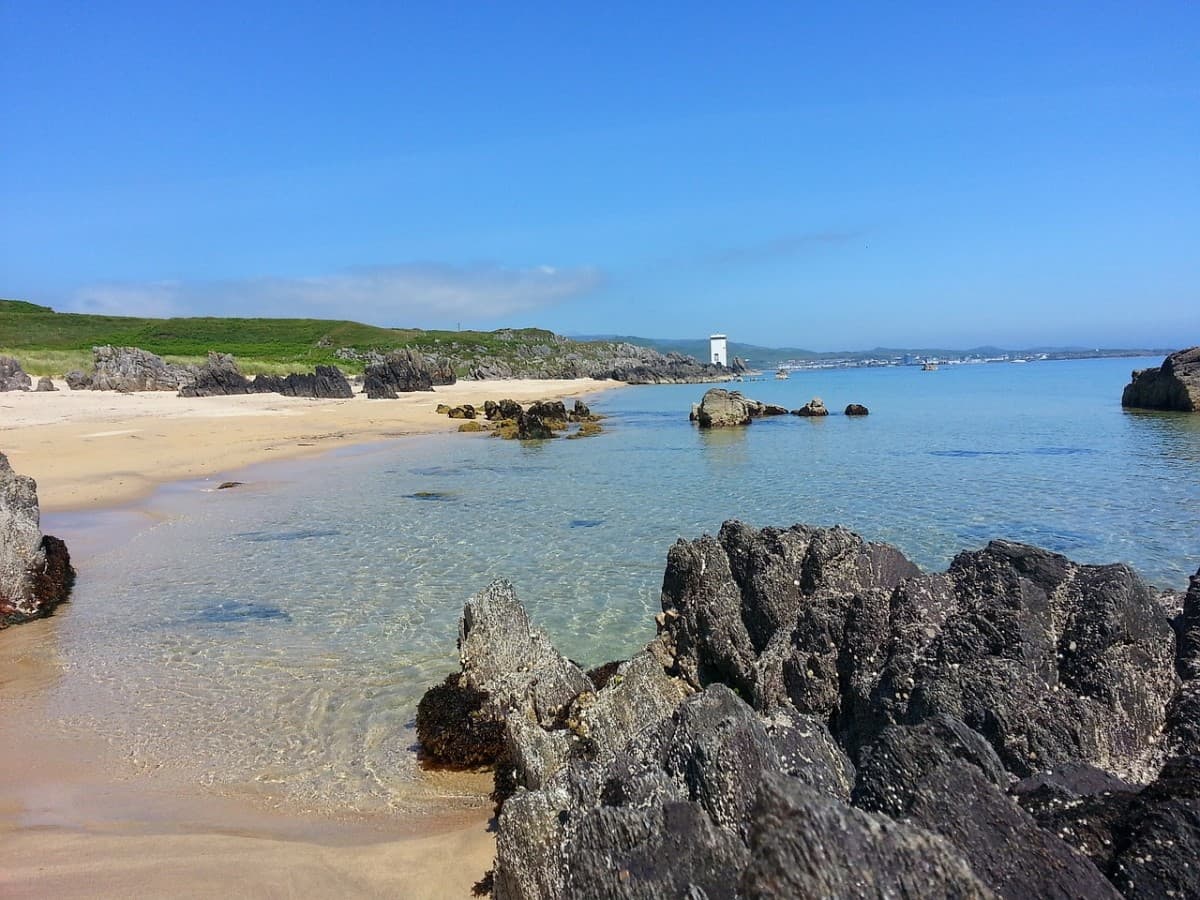
Wildlife
Along with the tourism for Islay’s landscapes and distilleries, the island draws thousands of birdwatchers each year who go there to view the spectacle of the annual migrations. One of the biggest flocks that fly onto the island is that of Barnacle Geese whose numbers swell to around 35,000 birds in winter, with reports of over 10,000 birds flying onto the island in just one day.
Many more bird species call Islay their permanent home and between 100 to 200 different types of birds are known to breed on the island each year. There are also several thousand deer, otters, whales, and seals to see, so if you choose to book a holiday on Islay you might find a pair of binoculars (link to binocular reviews) a worthwhile purchase.
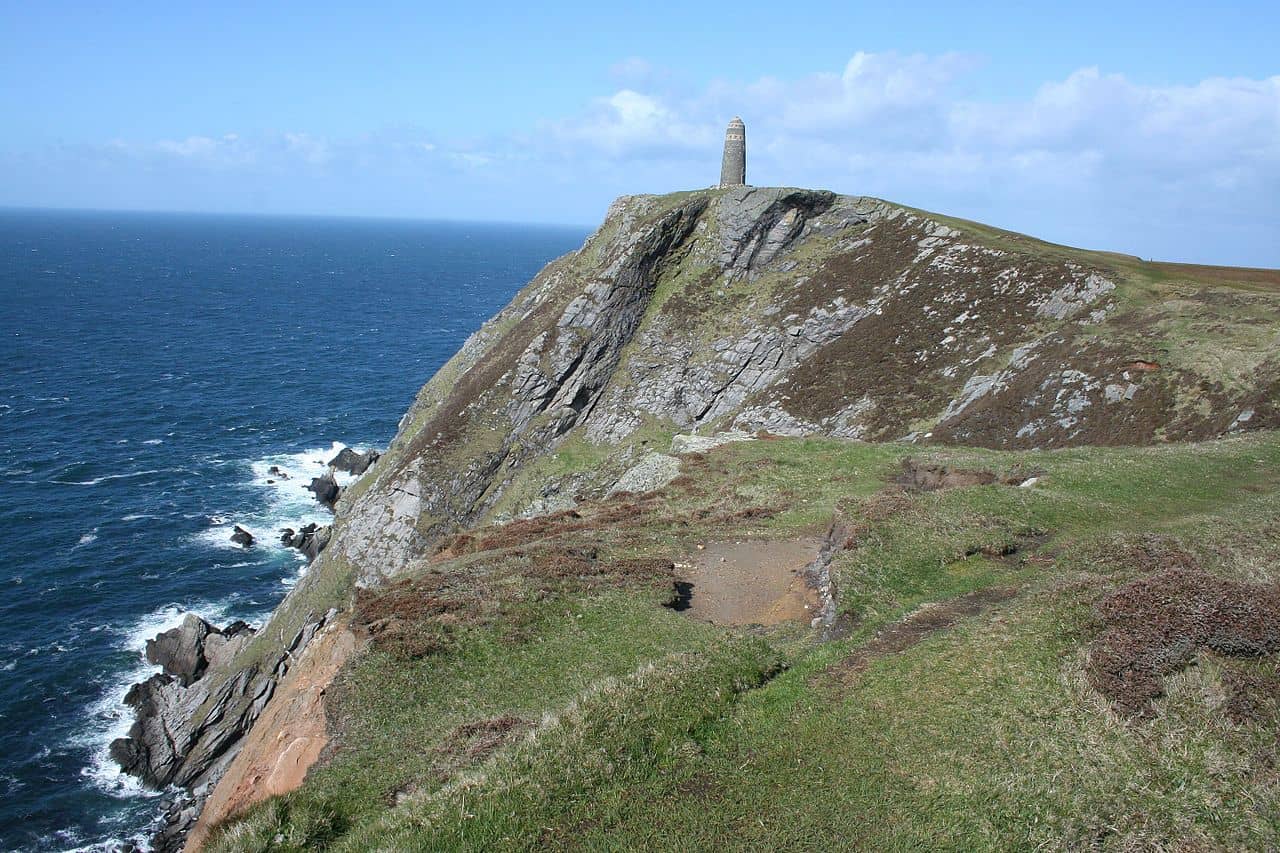
History
Islay has strong links to Ireland that stretch back thousands of years, with many of the island’s place names deriving from the Irish Gaelic language. In fact, from the 6th century, Islay was considered to lie within the Irish kingdom of Dal Riata rather than Scotland, although by the 9th century the Irish influence was starting to be replaced by Norse settlers who at the time were expanding their lands beyond Scandinavia.
From the 9th century until the 12th century, Islay was ruled by kings of mostly Norse origin with the most famous being Godfred Crovan, the fierce and much-feared warrior who was the King of Dublin until his eventual death on Islay in 1095. His death was significant because it marked the point where the population of Islay finally resisted their Norse rulers, culminating in the battle of Largs in 1263.
Shortly thereafter the Norwegian king handed over the authority of the Southern Hebrides to the Scottish King Alexander 3rd and the Isle of Islay has remained under Scottish rule ever since. You’ll find evidence of the reign of these ‘Lords of the Isles’ at Finlaggan on the northern side of Islay.
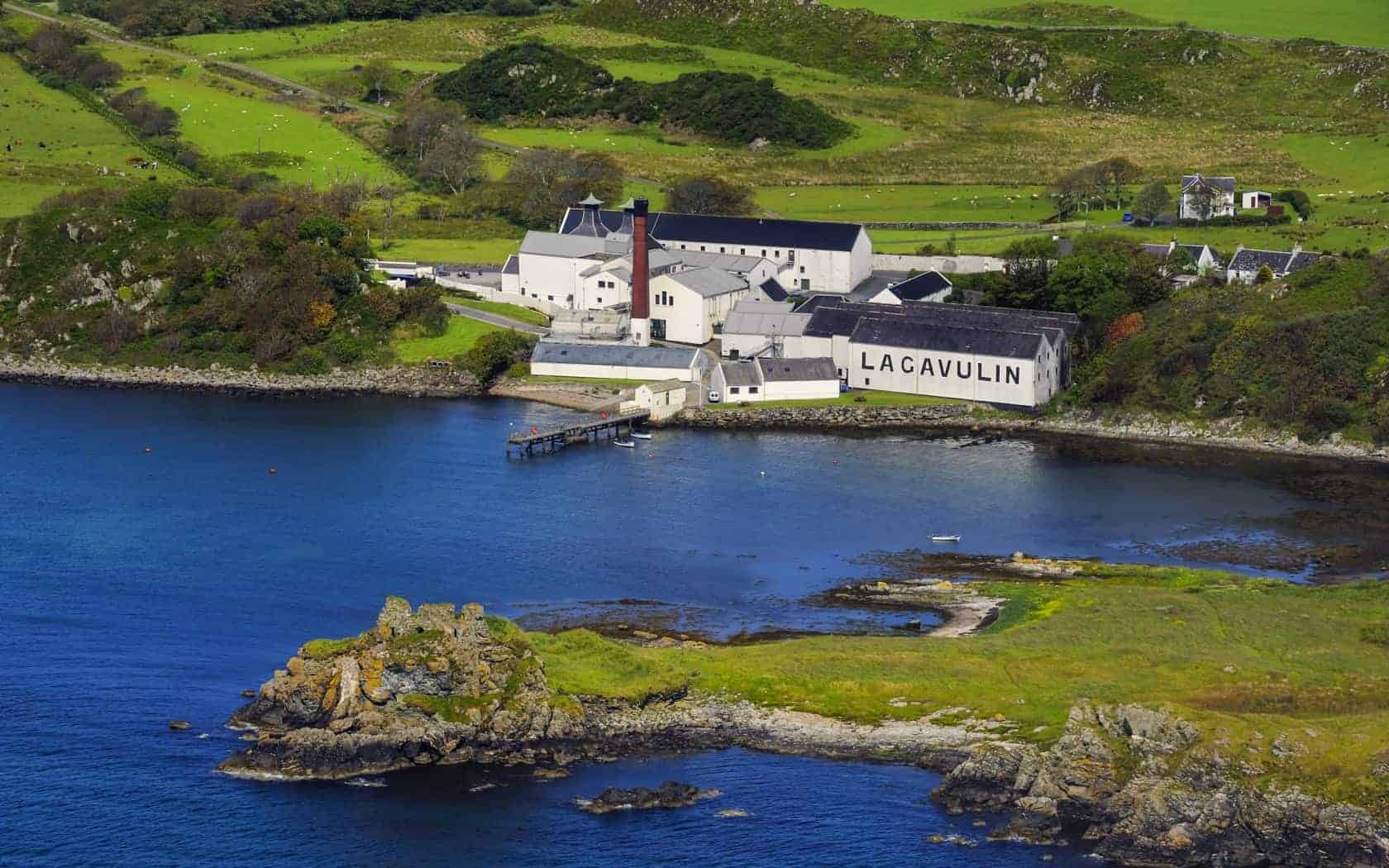
Things to Do
Islay Distillery Tours: Immerse yourself in Scotland’s rich whisky heritage with a tour of Islay’s world-renowned distilleries. Each distillery offers a unique experience, from the smoky, peaty flavours of Laphroaig to the complex, maritime notes of Bowmore. Learn about the traditional distillation process, savour exclusive tastings, and explore the grounds and warehouses.
Birdwatching at Loch Gruinart: Islay is a paradise for birdwatchers and Loch Gruinart is one of the best spots on the island. This RSPB nature reserve is home to a host of wildlife including the must-see spectacle of thousands of geese arriving each winter.
Hiking at The Oa: The Oa is a rugged peninsula on the southern tip of Islay that offers stunning cliff-top views and a variety of walking routes. It’s also a haven for wildlife with golden eagles, choughs, falcons and harriers regularly spotted. The American Monument, a poignant memorial to two shipwrecks, stands tall on the cliffs and is another must-see.
Exploring Islay’s Historical Sites: Delve into Islay’s past with a visit to its many historical sites. The ancient Kilchoman Cross and the 8th-century Kildalton Cross are fine examples of Celtic art, while the ruins of Finlaggan, the original seat of the Lords of the Isles, offer a fascinating glimpse into Scotland’s medieval history.
Machir Bay: Known for its wide sandy beach and rolling Atlantic waves, Machir Bay is the perfect place for a relaxing beach day. Kids can comb the beach for shells and sea glass while you take a refreshing dip in the sea or simply sit back and enjoy the stunning views. It’s also a popular spot for surfing if you’re feeling adventurous.
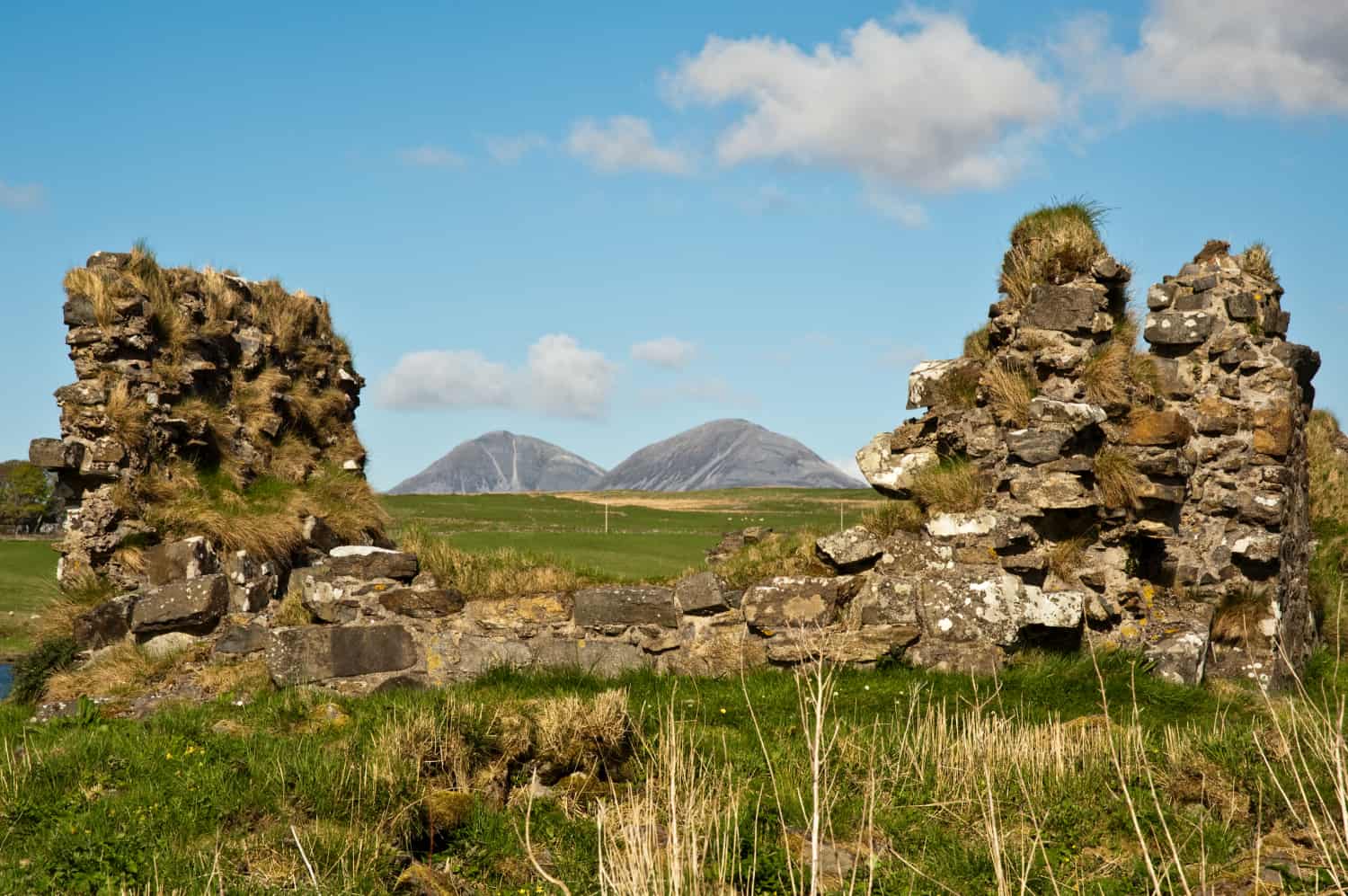
Book Tours in Scotland
Things to Do Nearby
Caol Ila Distillery. Port Askaig, Isle of Islay PA46 7RL.
One of Islay’s smallest distilleries but also one of its most popular thanks to the setting which overlooks the Isle of Jura. The distillery is open for summer tours and offers whisky-tasting experiences.
Port Askaig. Isle of Islay PA46 7RU. 8-minute drive.
A small village on the eastern coast of Islay which has a small ferry terminal that serves Jura, Colonsay and the Campbeltown Peninsula.
Ardnahoe Distillery. Ardnahoe, Port Askaig, Isle of Islay PA46 7RU. 11-minute drive.
One of the more recent distilleries on Islay. Offers guided tours, whisky-tasting experiences, and a gift shop.
Bunnahabhain Distillery. Bunnahabhain, Isle of Islay PA46 7RP. 14-minute drive.
A whisky distillery that is located on the northeast coast of the island, accessed by a single-track road. Guided tours are available.
Dunlossit Estate. Isle of Islay PA46 7RF. 10-minute drive to Port Askaig then 1 1/2 hour walk.
A popular walking area on Islay that is accessed via winding paths that run through gorse, woodland, a couple of lochs and grazing fields. From Port Askaig car park look for the gate that says ‘Footpath to Lily Loch’.
Frequently Asked Questions
How do I get to Islay?
The Isle of Islay is situated in the Inner Hebrides on the west coast of Scotland at roughly the same latitude as Glasgow.
For ferries, visit the Calmac website.
For flights, visit the Loganair website.
What is Islay known for?
The Isle of Islay is best known for its single-malt whisky distilleries that produce a unique, very smoky whisky.
The island is also highly rated for its beaches, its close proximity to Jura, its quaint fishing villages, and its wildlife both around the coast and in reserves such as Loch Gruinart.
How many days should you spend on Islay?
The ideal length for a visit to Islay depends on your interests, particularly if you’re a fan of whisky. It’s home to eight distilleries, so if you plan to visit most or all of them, you could easily spend a week there. However, if you’re just interested in a brief overview of the island and a couple of distilleries, a 2-3 day trip should suffice.
What clan is Islay ruled by?
The largest and most important clan on Islay is Clan Campbell. Historically, Islay was home to the Lords of the Isles who established a power base at Finlaggan. The current Lord of the Isles is Prince Charles.
Protect Your Family From Scotland's Biting Midges
- Powerful, reliable protection for up to 8 hours
- Water- and sweat resistant
- Repels midges, mosquitoes, horse flies, sand flies, fleas and ticks
- Safe for use on adults, children over 30 months and pregnant women
- Non-sticky, moisturising with a pleasant fragrance
- Packaging may vary




